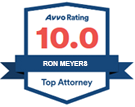In the world of sports, the thrill of the game often comes with inherent risks, including the potential for catastrophic injuries. For athletes and sports enthusiasts in Olympia, WA, understanding the legal landscape surrounding these severe injuries is crucial. This blog aims to shed light on the liability and legal recourse available for catastrophic sports injuries.
Understanding Catastrophic Injuries in Sports
Definition and Examples of Catastrophic Injuries
Catastrophic injuries in sports are those that result in severe, long-term, or even permanent effects on an athlete’s health and lifestyle. These injuries go beyond the scope of typical sports-related harm, leading to significant life changes and often requiring long-term or lifelong medical care. Examples include:
- Spinal Cord Injuries: These injuries can lead to partial or complete paralysis. For instance, a severe tackle in football or a fall in gymnastics can result in spinal damage, potentially causing permanent disability.
- Traumatic Brain Injuries (TBIs): TBIs can range from concussions to more severe brain damage. These injuries are particularly concerning because they can lead to cognitive impairments, emotional and behavioral changes, and in severe cases, permanent brain damage.
- Severe Fractures: While fractures are common in sports, catastrophic sports injuries can involve compound fractures or fractures that damage the surrounding nerves and blood vessels. Such injuries often require multiple surgeries and prolonged rehabilitation.
- Amputations: In extreme cases, sports injuries can lead to the loss of a limb. This can occur due to severe trauma or after a complication from an initial injury.
- Organ Damage: High-impact sports can sometimes result in damage to internal organs, which can be life-threatening and require emergency medical intervention.
These injuries not only potentially end athletic careers but also profoundly impact the quality of life, often necessitating changes in career paths, long-term medical treatment, and personal care.
Common Sports Leading to Severe Injuries
While catastrophic injuries can occur in any sport, certain sports have higher risks due to their nature.
- Football: Known for its high-impact collisions, football has a significant risk of concussions, spinal injuries, and severe fractures.
- Gymnastics: This sport combines height, speed, and power, leading to risks of severe falls that can result in spinal injuries or TBIs.
- Extreme Sports (e.g., BMX, Motocross, Mountain Biking): These sports often involve high speeds and heights, increasing the risk of severe injuries, including TBIs, spinal cord injuries, and fractures.
- Hockey: Similar to football, hockey’s high-speed collisions and hard surfaces increase the risk of concussions and spinal injuries.
- Cheerleading: Often underestimated, cheerleading involves complex stunts that can lead to severe falls, resulting in head injuries and fractures.
- Wrestling and Martial Arts: The intense physical engagement in these sports can lead to severe neck and spinal injuries.
Understanding these risks is crucial for athletes, coaches, and families in Olympia. It underscores the importance of safety measures, proper training, and legal awareness in the event of such unfortunate incidents.
Legal Framework Surrounding Sports Injuries
Liability in Sports Injuries
Determining liability in sports injuries is a multifaceted process, particularly in Olympia, WA. The key factors include inherent risk, negligence, and intentional misconduct.
- Inherent Risk: Many sports inherently carry risks of injury. When athletes participate, they implicitly accept these risks to a certain extent. However, this concept does not give a free pass to all types of injuries. The legal challenge lies in distinguishing between commonly accepted risks and those that are extraordinary or preventable.
- Negligence: This is where the bulk of liability cases in sports injuries lie. Negligence occurs when an individual or entity fails to act with the level of care that a reasonably prudent person would in the same situation. In sports, this could involve inadequate safety measures, poor maintenance of equipment or facilities, or insufficient training and supervision. For instance, if a gym in Olympia fails to maintain its equipment properly, leading to an injury, this could be a case of negligence.
- Intentional Misconduct: Although less common, there are instances where injuries result from intentional acts. This could include acts of violence during a game or intentional harm caused by a coach or another player. Such cases go beyond the scope of accepted risks and can lead to different legal repercussions.
In Olympia, WA, the interpretation of these factors can vary, making it essential to have knowledgeable legal representation to navigate these complexities.
The Role of Negligence and Consent
In many sports injury cases, the concept of negligence (failure to act with reasonable care) plays a central role. Athletes often consent to certain risks, but this does not absolve other parties from responsibility if their negligence contributed to the injury.
- Understanding Consent: In sports, athletes often consent to certain risks as part of the game. This consent, however, is limited. For example, a football player might consent to the risk of a tackle but not to unsafe playing conditions that lead to a slip and fall. The legal system in Olympia, WA, examines the scope of this consent and whether the injury fell outside what the athlete implicitly agreed to when participating.
- Negligence Overriding Consent: Even when an athlete consents to certain risks, this does not absolve other parties from their duty of care. If an injury results from a party’s failure to act responsibly – such as a coach pushing an athlete beyond safe limits or a school failing to provide adequate protective gear – this could constitute negligence. In such cases, the injured party may have grounds for a claim, despite the inherent risks of the sport.
- Proving Negligence: Establishing negligence involves demonstrating that the responsible party had a duty of care, breached that duty, and caused the injury directly. In Olympia, WA, this process requires thorough evidence gathering and legal expertise. For instance, if a runner suffers a catastrophic injury due to a poorly maintained public track, proving negligence would involve showing how the entity responsible for the track failed in its maintenance duties.
The Role of Ron Meyers and Associates in Your Case
Expertise in Personal Injury Law
Ron Meyers and Associates brings extensive experience in personal injury law, particularly in cases involving catastrophic sports injuries. Our firm’s deep understanding of the legal system in Olympia, WA, positions us uniquely to handle these complex cases.
Steps to Take After a Catastrophic Sports Injury
Immediate Actions and Medical Attention
The first step following a catastrophic injury is to seek immediate medical attention. This not only ensures the well-being of the injured party but also provides a medical record, which is crucial in any legal proceedings.
Documenting the Injury and Circumstances
Documenting the circumstances surrounding the injury, including witness statements and environmental conditions, can be pivotal. This information can play a crucial role in establishing the facts of the case.
Navigating Insurance and Compensation Claims
Dealing with Insurance Companies
Navigating insurance claims can be daunting. Understanding your rights and the extent of coverage is essential. Our team at Ron Meyers and Associates can guide you through this process, ensuring that insurance companies honor their obligations.
Understanding Compensation Rights and Limits
Understanding what compensation you are entitled to, including medical expenses, lost wages, and pain and suffering, is crucial. In Olympia, WA, there are specific laws that govern these rights and limits.
Identifying Liable Parties in Catastrophic Sports Injuries in Washington
In the aftermath of a catastrophic sports injury in Washington State, determining who can be held liable is a critical step in seeking justice and compensation. The nature of sports and the circumstances of the injury play a significant role in identifying potentially liable parties. Here are some common entities and individuals who might be held responsible:
- Schools and Educational Institutions: If the injury occurred during a school-sponsored sports activity, the school might be liable, especially if the injury resulted from inadequate supervision, poor training, or unsafe conditions. Washington State law requires schools to maintain a duty of care towards their students.
- Sports Coaches and Trainers: Coaches or trainers may be held liable if their negligence, such as pushing athletes beyond safe limits or failing to provide adequate safety instructions, leads to an injury. Their professional duty includes ensuring athletes’ safety and well-being during training and competition.
- Sports Facilities and Equipment Manufacturers: If an injury is caused by defective or poorly maintained equipment or unsafe facilities, the manufacturers or owners of these facilities can be held liable. This includes gyms, stadiums, and public sports complexes in Washington.
- Sports Leagues and Organizations: These entities can be held responsible if the injury resulted from their failure to enforce safety regulations, inadequate medical care, or other forms of negligence.
- Fellow Athletes: In some cases, another athlete may be liable, especially if the injury was caused by an act that goes beyond the normal scope of the sport, such as intentional harm or extremely reckless conduct.
- Event Sponsors and Promoters: If the injury occurred during a sponsored event or competition, the sponsors or promoters might be liable, particularly if they failed to ensure the safety of the event or provided inadequate medical facilities.
- Government Entities: For injuries occurring in public sports facilities, liability may extend to government entities responsible for maintaining the safety of these spaces. However, claims against government bodies can be complex due to sovereign immunity laws in Washington State, which sometimes protect government entities from liability.
- Healthcare Providers: In cases where an athlete’s injury is exacerbated by medical malpractice or misdiagnosis, healthcare providers can also be held liable.
It’s important to note that Washington State follows the doctrine of comparative negligence, which means that if the injured party is found to be partly at fault for their injury, their compensation may be reduced by their percentage of fault.
Given the complexity of liability in catastrophic sports injuries, it is crucial for victims and their families in Olympia and across Washington State to seek experienced legal counsel. A skilled attorney can help navigate the intricate web of potential liability and advocate for the victim’s rights and entitlements.
The Litigation Process for Catastrophic Sports Injuries
Filing a Lawsuit: When and How
Deciding to file a lawsuit is a significant step. It involves understanding the statute of limitations in Washington State and the specifics of how to file. Our team can guide you through each step, ensuring that your case is presented effectively.
What to Expect During the Litigation Process
The litigation process can be lengthy and complex. It involves gathering evidence, presenting your case, and potentially going to trial. Having experienced attorneys like those at Ron Meyers and Associates can make a crucial difference in the outcome.
Preventative Measures and Safety Guidelines
Promoting Safer Sports Practices
While understanding legal recourse is essential, promoting safety in sports is equally important. This includes advocating for better safety equipment, training, and regulations.
Role of Schools and Sports Organizations in Injury Prevention
Schools and sports organizations play a crucial role in preventing catastrophic injuries. Implementing strict safety protocols and providing adequate training can significantly reduce the risk of severe injuries.
Your Rights Matter in Catastrophic Injury Cases
Catastrophic sports injuries can have life-altering consequences. Understanding your legal rights and options in Olympia, WA, is crucial in these situations. Ron Meyers and Associates is dedicated to providing expert legal guidance and support to those affected by such injuries.
Contact Ron Meyers and Associates for Help with Your Catastrophic Injury Case
If you or a loved one has experienced a catastrophic sports injury in Olympia, WA, don’t navigate this challenging time alone. Contact Ron Meyers and Associates for a consultation to explore your legal options and ensure your rights are protected. Schedule an appointment and take the first step towards securing the compensation and support you deserve.





